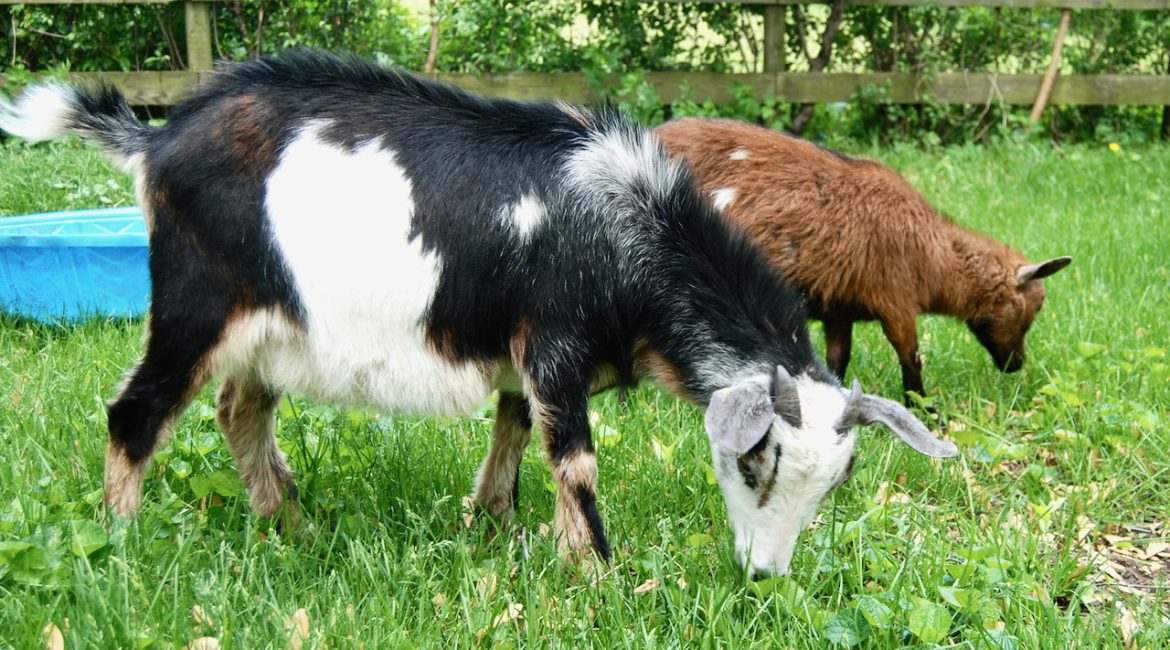By Anita Martin
The Minnesota Farmers Union’s newsletter recently reported that a baby goat has become infected with H5N1 avian influenza. This is the same bird flu virus, albeit with different variants, which to date has resulted in the loss of 82,048,716 birds in the U.S., according to the CDC. Some of the latest statistics are found here: https://www.cdc.gov/flu/avianflu/avian-flu-summary.htm.
Last Wednesday, the Minnesota Board of Animal Health announced that highly pathogenic avian influenza (HPAI) had been detected in a baby goat that lived at a farm where a bird flu outbreak had occurred last month. Reports indicate that chickens, ducks, and goats on the farm shared living space and used the same drinking water.
Available information states that 10 baby goats between 5 and 9 days old perished about 160 miles north of Minneapolis. The Minnesota Board of Animal Health emphasized how animals with weakened or not fully developed immune systems, such as newborn goats, are more susceptible to the disease.
It appears this is the first time that bird flu has been detected in U.S. livestock. More information about the recent infection in Minnesota goats is here: https://phys.org/news/2024-03-goat-dies-bird-flu-minnesota.html#google_ vignette and here: https://www.cidrap.umn.edu/avian-influenza-bird-flu/avian-flu-detected-first-time-us-livestock .
On a different note, though not totally off topic, last Thursday, on my way home from Madison, I saw two white swans on Rock Lake. Without binoculars and without avian species expertise, there was no way for me to tell if they were Trumpeter swans or Tundra swans, both of which are migratory species in Wisconsin. After admiring their beauty and grace from afar, I couldn’t help but think to myself, “Hey! Are you guys negative for avian flu?”
The last Bird’s Eye View column forecasted upcoming discussion of what perhaps can be done to help reduce avian flu risks. Disclaimer: I am no expert; however, here are a few suggestion I think we could consider and ponder:
Apps and vaccinations
What about a phone app, like Michigan’s Department of Natural Resources created for citizens to report potential wildlife abnormalities? Read about their “Eyes in the Field” opportunity, here: https://www.upmatters.com/news/local-news/dnr-launches-eyes-in-the-field-app-for-reporting-fish-and-wildlife-observations/ . In checking with our state agency, Wisconsin DNR microbiologist in the Wildlife Health Section Nancy K. Businga said we don’t have an app; however, citizens can report sick or dead birds via the Sick or Dead Wildlife Observation Reporting System. A link to the Wisconsin’s DNR website explaining the system is here: https://dnr.wisconsin.gov/topic/WildlifeHabitat/wildlifehealth#:~:text=Or%20you%20can%20contact%20the,the%20number%20of%20animals.
Is there any way to significantly expedite the vaccination of U.S. birds? Last month at a Congressional hearing, our U.S. Agriculture Secretary Thomas Vilsack announced we’re about 18 months away from having a vaccine, which was certainly disappointing news for many people. Nearly a year ago, the World Organization for Animal Health advised countries to consider poultry vaccination to help reduce the increasingly prolific global spread of the disease. A number of countries in Asia, Europe, and Central America have implemented vaccination programs over the last two years, in their chicken, turkey, and duck populations.
When will we have open, public, and interactive conversations about current practices in Jefferson County, and what can be voluntarily changed by producers and backyard flock owners to help reduce HPAI as well as Low Pathogenic Avian Influenza (LPAI) risks?
The Wisconsin Department of Agriculture, Trade, and Consumer Protection and the Wisconsin DNR currently do not prohibit headland stacking of chicken manure in fields. Nor do these agencies prohibit storage of poultry manure without the use of appropriate-sized meshed netting to help prevent wild birds, rodents, or other wildlife, all of which are potential carriers of the deadly disease, from entering the waste storage barns.
It appears these less-than-best practices may still be in use by some poultry owners in our county. Is this a good idea? The old adage, “Just because you can, doesn’t mean you should,” seems to be worth contemplating at a time when everything from skunks to crows to, most recently, goats, could be carrying or spreading the deadly disease.
Gulls, the ‘super spreaders’
What can be done to help deter flocks of gulls from congregating close to the large egg laying facilities’ poultry barns, on facility roofs, and elsewhere in Jefferson County?
Herring gulls and black-headed gulls are among the types of birds which experts consider “super spreaders” in that they serve as vectors for spreading influenza disease to other bird species.
In 2021, I spoke with Durk Dunham, then-director of emergency management in Calhoun County, Michigan, where the historic Kalamazoo River petroleum pipeline spill occurred. During the course of our conversation, Mr. Dunham — favoring county-specific, tailored all-hazards mitigation plans over natural hazards mitigation plans — asked me: what are the biggest hazards our county faces? Although this discussion took place before the two 2022 Jefferson County HPAI outbreaks, my list included bird flu risks.
Might it be time to consider pursuing federal funding to develop an all-hazards mitigation plan which encompasses avian influenza?
Johns Hopkins epidemiologist and environmental microbiologist Dr. Meghan Frost Davis is one of many scientists who’ve been voicing concern over the expanded host range of the H5N1 pathogen and “constantly changing flu viruses.”
As unprecedented bird flu outbreaks continue and the H5N1 virus, alongside other avian viruses keeps evolving, the time is right for proactive, collaborative outside-the-box thinking.
Coming soon: National legislation in the works, to reduce zoonotic disease risks.
Anita Martin is a longtime freelance journalist whose work has appeared in such publications as the Waterloo/Marshall Courier, The Madison Times, Agri-View, Dane County Lifestyles (formerly 50 Plus Lifestyles newsmagazine), Verona Press and Wisconsin Woman magazine, covering such topics as health and wellness, and women’s and multicultural issues. More recently, she has developed interest in such topics as environmental issues, avian influenza and other zoonotic diseases, and public health.

Goats graze on a Wisconsin farm. File photo/Kim McDarison.
This post has already been read 642 times!
